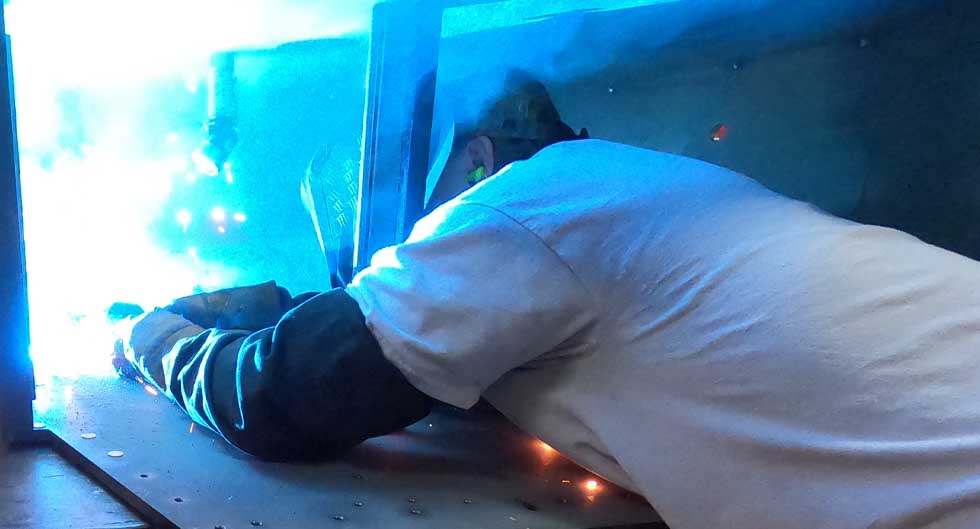Machining & More The Compass Way
Compass touts its skills in making the “tough stuff” – metal components and subassemblies most shops won’t touch. Its eight shops all specialize in precision CNC machining, each with its own specialty. But Compass also knows its way around metal fabrication (why let the machinists have all the fun?). Among its fab skills is welding… yes, that seemingly older-than-dirt process of joining two metal pieces together. But Compass claims to have raised this ancient process into a modern day art form, just as impressive as its latest generation CNC machines. To better understand what is going on, we chased down VP and COO Bill Canning. This is what we learned:
Why Is Welding Important To Compass?
By definition, our customers need parts. But sometimes, they want us to attach parts together and make a subassembly. There are lots of ways to do this. But more often than not, welding is the best solution. Some shops outsource welding, or rely on customers to do it for themselves. Others do it themselves as a sideline, with personnel and equipment really intended for something else. But for Compass, it is a fundamental internal process. And we pride ourselves at being very good at it.
What Are Compass’s Core Welding Capabilities?
Before we talk about different welding processes and materials, it is important to understand where Compass fits within the world of metals manufacturing. We focus on highly exacting, mission critical components for industries like aerospace & defense, space, medical, telecommunications, power generation, and industrial automation. The requirements for these markets tend to involve lots of new product development, short-to-medium length product life cycles, and modest production quantities. We believe the best way to meet welding needs for these requirements is to employ highly skilled welders supported with the latest generation manual welding equipment.
Wait A Minute, I Thought Compass Was All About The Latest Automated Equipment?
Hahaha… somebody has been paying attention to our website, videos, and news releases. That is true for our CNC machining capabilities and most of our fab stuff. But welding is different. Honestly, Compass’s sweet spot in volume is probably 10 to 100 pieces per lot. And with fabricated subassemblies, it’s on the low end of that range. That means we are typically looking at weld requirements in the 10 to 25 piece per lot range. So, even with all the automated welding robots out there, we believe our manual approach with skilled welders is the way to go.
Are You Claiming Your Welders Are Better Than Automated Welding Machines?
Yes, but only for the kinds of work we do. Remember, we are mostly a high mix, low volume operation, based on the markets we serve. That places a premium on the ability to quickly set up and do many different welding jobs. We need flexibility combined with always getting it right the first time. I’ll put our welders up against any robotic solution – we’ll have three jobs done well and be on to the fourth job before the robots have started production. If volume requirements are measured in tens or hundreds of thousands, as they are in other industries like auto, the robots always win. But that’s generally not our customers’ world.
OK, Given Your Manual Orientation to Welding Solutions, What Particular Welding Processes Do You Employ?
We have in-house expertise with three types of welding: metal inert gas (MIG) welding, tungsten inert gas (TIG) welding, and flux-cored arc welding (DCAW). We use MIG and TIG mostly. Usually, our customers will dictate what process to use on their drawings and specifications, although sometimes they ask for our advice. Internally within Compass, we have welding certifications for AWS D1.1, D1.2, D1.6, D17.1, and ASME Section IX, as well as Cold Metal Transfer (CMT). Plus, we are certified to numerous customer specifications including some very demanding space requirements.
We Have Heard About MIG and TIG Welding – What Is MIG?
MIG is sometimes called wire-feed welding. It sends an electrical current through a gas-shielded spool of wire, that serves as both the electrode and filler material. When the wire touches the parts, it short-circuits, melting the electrode and surrounding metal at the same time. One advantage of MIG is that it is easier to become proficient, when compared to a process like TIG. Compass also has the latest welding technology like Cold Metal Transfer (CMT). While it is similar to the standard MIG process, CMT only generates one-tenth of the heat, allowing you to weld much thinner materials, increased welding speeds, much lower distortion, reduced post-weld clean-up, visually appealing welds, and perhaps most importantly, the ability to weld previously un-weldable materials like ultra-high strength armor plating, that would crack and embrittle using traditional welding processes.
Ok Then, What Is TIG Welding?
In contrast to MIG, TIG requires a more highly skilled welder to hold an electrically charged tungsten electrode in one hand and metal filler wire in the other hand. The welder uses the tungsten electrode to strike an arc between it and the parts, heating the surface of the parts enough to melt it. Then he feeds enough filler rod into the weld joint to securely bond the two surfaces. We have a really good Compass welding video that shows our welders talking about and doing both MIG and TIG welding. We also have a technical paper entitled “What’s the Difference between MIG & TIG Welding?”
And What About Flux-Cored Arc Welding?
Flux-cored arc welding, or FCAW, is similar to MIG except a flux-filled metal tube is used instead of a solid metal wire electrode surrounded by an inert gas. This type of welding is inexpensive to operate and easy to learn, but is less often used in a factory setting. FCAW is employed most commonly on construction sites or to make quick repairs out in the field.
Finally, Do You Have Anything Else To Tell Our Audience About Compass’s Welding Capabilities?
Obviously, Compass is first and foremost a CNC machining company. But we offer our customers a multitude of other manufacturing processes, most notably metal fabrication capabilities. Welding is one of these and we are really good at it. We love quoting projects that include putting parts together by welding. What really sets us apart is the ability to combine the machining and welding worlds to provide an alternative manufacturing solution that is faster and more cost-effective. It is all about providing the best value to our customers.
For additional information about Compass, how its experts do welding, or anything else about its part and subassembly manufacturing, please feel free to contact VP and COO Bill Canning directly at [email protected]. For anything else concerning Compass, please contact VP of Sales Jim Miller at [email protected].

